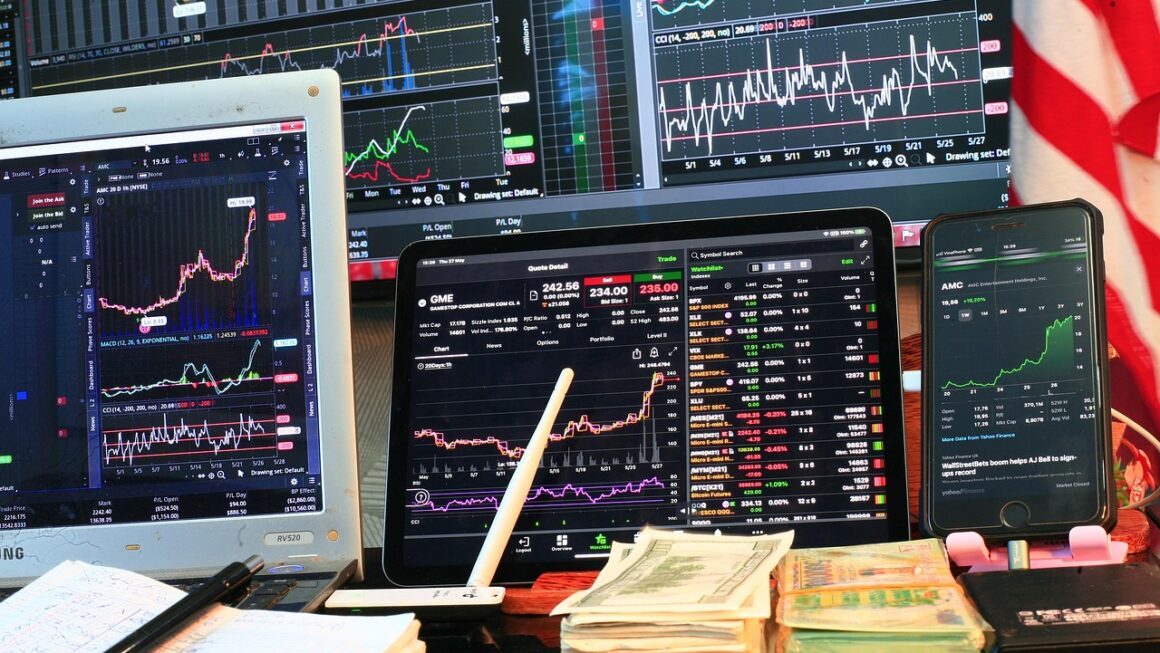Trading platforms have revolutionized how individuals and institutions engage with financial markets. Gone are the days of solely relying on brokers and phone calls. Today, a vast array of platforms offer sophisticated tools, real-time data, and direct access to markets around the globe. Choosing the right trading platform is a critical decision that can significantly impact your success as a trader or investor. This post explores the key aspects of trading platforms, helping you navigate the options and find the best fit for your needs.
Understanding Trading Platforms
What is a Trading Platform?
A trading platform is a software application that allows investors and traders to buy and sell financial instruments, such as stocks, bonds, currencies, commodities, and cryptocurrencies. They provide access to market data, order execution capabilities, charting tools, and often analytical features to aid in investment decisions. Modern platforms are typically accessible via desktop applications, web browsers, and mobile apps, offering flexibility and convenience.
- Example: Think of platforms like TD Ameritrade, Interactive Brokers, or Binance. Each offers access to different asset classes and features.
Key Features of a Good Trading Platform
The quality of a trading platform hinges on several key features. Evaluating these features is essential when selecting the right platform for your trading style and investment goals.
- User-Friendly Interface: The platform should be intuitive and easy to navigate, especially for beginners. A cluttered or confusing interface can lead to costly mistakes.
- Real-Time Data: Access to accurate and up-to-date market data is crucial for informed decision-making. Look for platforms that offer streaming data feeds and customizable alerts.
- Charting Tools: Robust charting capabilities are essential for technical analysis. Features like indicators, drawing tools, and customizable timeframes are highly valuable.
- Order Types: A wide range of order types, including market orders, limit orders, stop-loss orders, and trailing stop orders, allows for precise control over trade execution.
- Security: Security is paramount. Ensure the platform employs robust security measures, including two-factor authentication and encryption, to protect your account and personal information.
- Customer Support: Responsive and knowledgeable customer support is essential for resolving technical issues and addressing account-related questions.
- Mobile Accessibility: The ability to trade on the go via a mobile app offers flexibility and convenience. The mobile app should mirror the functionality of the desktop platform.
Types of Trading Platforms
Trading platforms can be categorized based on several factors, including the asset classes they support and the target audience they serve.
- Stock Trading Platforms: Focused primarily on stocks, ETFs, and options. Examples include Charles Schwab, Fidelity, and Robinhood.
- Forex Trading Platforms: Specialized for trading currencies. MetaTrader 4 (MT4) and MetaTrader 5 (MT5) are popular choices.
- Cryptocurrency Exchanges: Platforms dedicated to buying, selling, and trading cryptocurrencies like Bitcoin and Ethereum. Examples include Binance, Coinbase, and Kraken.
- Multi-Asset Platforms: Offer access to a wide range of asset classes, including stocks, bonds, currencies, commodities, and cryptocurrencies. Interactive Brokers is a prime example.
Choosing the Right Platform
Assessing Your Needs
Before selecting a trading platform, it’s crucial to carefully assess your individual needs and trading style. Consider the following factors:
- Investment Goals: Are you a long-term investor or a short-term trader? Your investment goals will influence the types of assets you need access to and the tools you require.
- Trading Style: Do you prefer fundamental analysis, technical analysis, or a combination of both? Choose a platform that offers the analytical tools that align with your approach.
- Risk Tolerance: Understand your risk tolerance and choose a platform that offers risk management tools, such as stop-loss orders and position sizing calculators.
- Capital Available: Some platforms require minimum account balances, while others do not. Factor this into your decision.
- Technical Expertise: If you’re a beginner, opt for a user-friendly platform with educational resources. Experienced traders may prefer platforms with advanced features and customization options.
Comparing Platform Features
Once you’ve assessed your needs, compare the features of different platforms to find the best fit. Pay attention to the following:
- Fees and Commissions: Compare commission rates, account fees, and inactivity fees. Some platforms offer commission-free trading, but may charge higher fees for other services. For example, Robinhood is popular for commission-free stock trading.
- Asset Selection: Ensure the platform offers access to the assets you want to trade. Not all platforms support all asset classes.
- Trading Tools: Evaluate the platform’s charting tools, order types, and analytical features.
- Research and Education: Look for platforms that offer research reports, educational materials, and webinars to help you improve your trading skills.
- Platform Reliability: Read reviews and check the platform’s uptime statistics to ensure it’s reliable and stable.
Demo Accounts and Trials
Many trading platforms offer demo accounts or free trials that allow you to test the platform’s features and functionality without risking real money. This is an excellent way to get a feel for the platform and ensure it meets your needs before committing to a live account. For example, most Forex brokers will allow you to paper trade using MT4 and MT5.
Trading Platform Security and Regulation
Importance of Security
The security of your trading platform is of paramount importance. Given the sensitive financial information involved, platforms are prime targets for cyberattacks. Look for platforms that implement robust security measures, including:
- Two-Factor Authentication (2FA): Requires a second form of verification, such as a code sent to your phone, to access your account.
- Encryption: Protects your data during transmission and storage.
- Secure Socket Layer (SSL): Ensures a secure connection between your browser and the platform’s server.
- Regular Security Audits: Independent audits to identify and address vulnerabilities.
- Account Protection: Measures to protect your account from unauthorized access, such as account monitoring and fraud detection.
Regulatory Oversight
Trading platforms should be regulated by reputable financial authorities, such as the Securities and Exchange Commission (SEC) in the United States, the Financial Conduct Authority (FCA) in the United Kingdom, or the Australian Securities and Investments Commission (ASIC) in Australia. Regulation provides a level of protection for investors by ensuring that platforms adhere to certain standards of conduct and financial stability. Check the platform’s regulatory status before opening an account.
- Example: In the U.S., look for platforms registered with the SEC and members of the Financial Industry Regulatory Authority (FINRA).
Protecting Your Account
While trading platforms implement security measures, it’s also your responsibility to protect your account. Here are some tips:
- Use a Strong Password: Create a unique and complex password that is difficult to guess.
- Enable Two-Factor Authentication: Always enable 2FA to add an extra layer of security to your account.
- Be Wary of Phishing Scams: Be cautious of suspicious emails or messages that ask for your login credentials.
- Keep Your Software Up to Date: Install the latest security updates for your operating system and browser.
- Monitor Your Account Regularly: Check your account activity frequently for any unauthorized transactions.
Advanced Features and Tools
Algorithmic Trading
Algorithmic trading involves using computer programs to execute trades based on predefined rules. Some platforms offer tools and APIs (Application Programming Interfaces) that allow traders to develop and deploy their own algorithms. This allows for automated trading strategies based on technical indicators or other data.
- Example: Using Python and the Interactive Brokers API to automatically buy or sell stocks when certain moving average crossovers occur.
Options Trading Tools
Platforms supporting options trading often provide specialized tools for analyzing options strategies, such as option chains, profit/loss calculators, and risk graphs. These tools help traders evaluate the potential risks and rewards of different options positions. These features are critical for developing an options trading strategy.
API Integration
API integration allows you to connect your trading platform with other applications or services, such as data providers, charting software, or portfolio management tools. This can streamline your workflow and enhance your trading capabilities. Some platforms also offer dedicated APIs for algorithmic trading and custom integrations.
Social Trading
Social trading platforms allow you to follow and copy the trades of other successful traders. This can be a useful way to learn from experienced traders and potentially profit from their strategies. However, it’s important to exercise caution and do your own research before blindly copying someone else’s trades. Past performance doesn’t guarantee future results.
Conclusion
Choosing the right trading platform is a vital step towards achieving your financial goals. By understanding the key features of trading platforms, assessing your individual needs, and carefully comparing your options, you can select a platform that empowers you to trade effectively and confidently. Remember to prioritize security, regulatory oversight, and ongoing education to maximize your success in the financial markets. Take advantage of demo accounts and free trials to thoroughly evaluate a platform before committing to a live account. The time invested in selecting the right platform will pay dividends in the long run.




